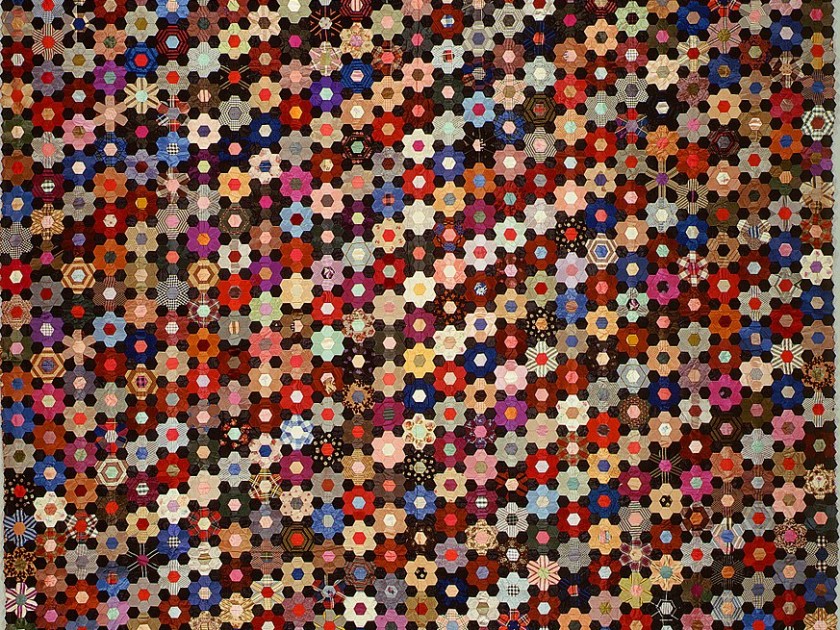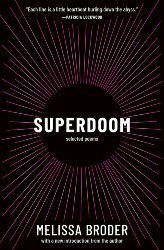
Quilt, hexagon or mosaic pattern, The Metropolitan Museum of Art
Many cultures have myths about the creation of humans, and some of these explain why men are superior to women. But the Bible, rather surprisingly, has two versions of the creation myth – one in which sex category determines destiny, and another in which being male or female is of no significance whatsoever. The latter account is the first to appear. It’s a short, simple story about how humans, males and females, were created to rule the world. In this version, the human male and female are portrayed as equal – in the way they were created as well as in their roles in the world; they are to rule it together: “Male and female created he them. And God blessed them, and God said unto them, Be fruitful, and multiply, and replenish the earth, and subdue it.” (Genesis 1:27 – 28)
The second account, which appears in the subsequent two chapters, is a long, complex story, in which the human male is portrayed as superior to all other creatures, including the human female. He is created first in order to rule the world; the female is created later, from his rib, because “it is not good that the man should be alone.” (Genesis 2:18) Regardless of how one interprets God’s intention behind creating the female, the rest of the story leaves no doubt that males and females are not only inherently different in their very essence (he was created from dust, she from a rib) and in their role in the world (he would cultivate the land, she would bear children), but also in their respective positions in society – the male is superior to the female, who is told about her husband: “he shall rule over thee.” (Genesis 3:16)
While I do find it puzzling that two such different stories co-exist in the Bible, it’s hardly surprising that it’s the second one – the myth about an essential difference between women and men, which penetrates every aspect of their existence – that has won out not only in Judaism, but in Western culture throughout history. After all, this second myth is better aligned with patriarchy than the first one. It then makes sense that in the seventeenth century, when science started replacing religion in providing explanations for the physical and the social world, scientists took upon themselves the burden of providing evidence for women and men being intrinsically different, and for the inherent superiority of men over all other creatures, including women. That was how the scientific myth about the female and male brain was created.
While I do find it puzzling that two such different stories co-exist in the Bible, it’s hardly surprising that it’s the second one – the myth about an essential difference between women and men, which penetrates every aspect of their existence – that has won out.
Some of the earlier versions of this myth seem naïve, even ridiculous in retrospect. These include historic claims that the size of men’s skulls or brains, which are on average larger than those of women, is proof of men’s greater intelligence and the reason women can’t study in universities. In the twenty-first century, the myth of the female and male brain is still with us, focusing not on brain size but, instead, on the differences between females and males in the micro and macro structure of the brain. The interpretation of these differences is always the same: they are taken as evidence that men and women are fundamentally different, and therefore expected to occupy different positions in the world. Rather than declaring that it was God who created us this way, the scientific myths tell us that it was nature. But are these myths, the Biblical and the scientific ones, true?
Many scientists, mostly women, have long argued that the myth of the female and male brain is false. They have provided an alternative explanation for women’s and men’s different status. For the most part, they have been showing that observed differences between women and men are not a result of a “natural” difference between their brains, but of the different ways in which society treats human females and males.
In the past decade, my colleagues and I have conducted research that challenges the old myths in a completely new way. This avenue of research does not concern itself with the source of observed differences between human females and males – whether they come from nature or nurture. Nor does it deny the existence of differences between women and men in brain and behavior, or the fact that sex-related genes and hormones (like testosterone and estrogen) produce direct effects on the brain. Rather, it focuses on accumulating scientific evidence that the effects of sex-related genes and hormones on the brain mix up in every individual to create unique mosaics of brain features – some features in the form more common in women and others in the form more common in men.
The results of our study were published in the Proceedings of the National Academy of Sciences, USA, in 2015. In that study, we also analyzed the behaviors and preferences of over 5,500 American women and men. We chose about ten features on which women and men differed the most, including such variables as worry about weight, gambling, engagement in sports, and the use of cosmetics. I’m sure you can guess which of these received higher values in women and which in men, but you may be surprised to learn that participants who had only “masculine” or only “feminine” scores were extremely rare. On the other hand, participants who had both “masculine” and “feminine” scores were very common. This is probably something you know about yourself – you may very well have masculine characteristics and feminine ones, as most of us do.
Yet, society treats us as if we belonged to two types of people in terms of our gender characteristics. It’s true that most of us belong to one of two types in terms of the form of our genitals; except for a very small minority of people born with intersex genitals, humans have either only female or only male genital organs. But this binary division doesn’t hold for our behaviors and preferences – or for our brains.
Yet, society treats us as if we belonged to two types of people in terms of our gender characteristics.
Let’s take just two variables as an example. It’s known from research that women, on average, are more interested in people than men are, whereas men, on average, are more interested in things than women are. However, this doesn’t mean that human beings belong to two types: those interested in people but not in things, and those interested in things but not in people. Research shows that there’s little relation between these two variables, so that both women and men can be interested in both people and things, in neither, or only in one and not the other. Thus, even when we consider only two characteristics, we end up with four types of people, not only two. If we were to consider more variables, the number of potential mosaics would skyrocket. Yet, the social system we call gender takes this enormous human variability and attempts to squeeze it into two boxes – man and woman.
In the world I envision there is no division into two genders; in fact, in this world, there is no gender at all. There are people with female, male, or intersex genitals, but the form of one’s genitals has no bearing on the roles they can assume in society – just as in the first version of the Bible’s creation myth. As I write in my book, Gender Mosaic, in this vision of the world, whatever you like and do – if it’s appropriate for humans, it’s appropriate for you.
Check out Daphna Joel and Luba Vikhanski’s Gender Mosaic: Beyond the Myth of the Male and Female Brain!
Daphna Joel is a professor of psychology and neuroscience at Tel-Aviv University. She is the author with Luba Vikhanski, of Gender Mosaic: Beyond the Myth of the Male and Female Brain (Little, Brown Spark, NY).



